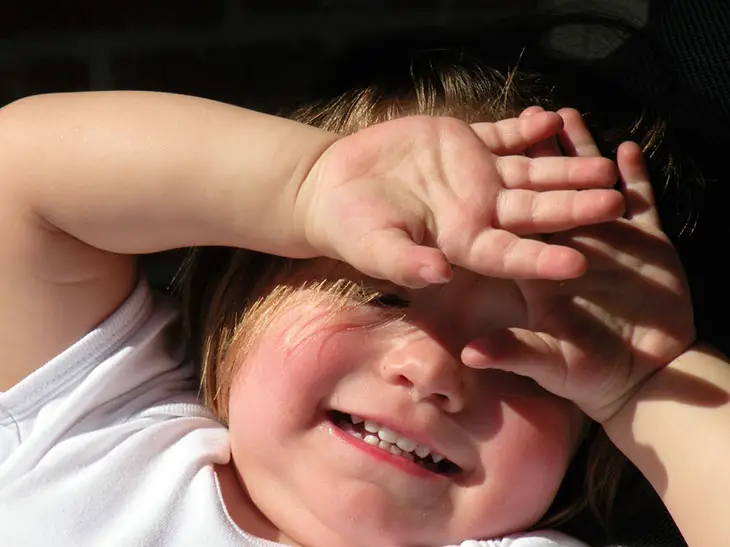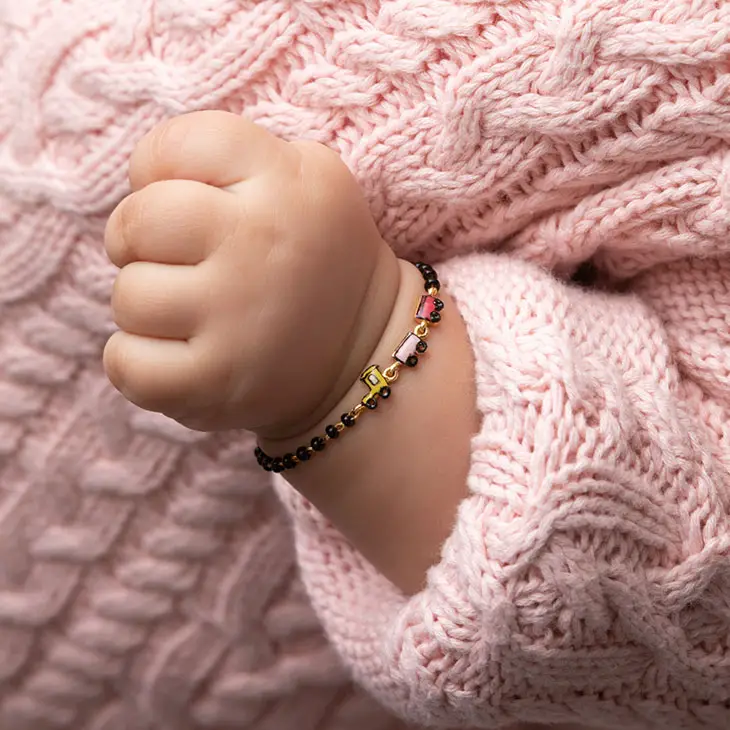Your baby is growing and learning about his body and how to move each body part.
Most of the time, their movements are funny, but sometimes, they can be alert to some disorders that require further observation.
Baby rotating hands on wrists indicate your little one is glad or excited. However, once you see other symptoms along with it, it may be time to consult with the pediatrician.
Since it can be a sign of autism or motor skills issues, paying attention is necessary.
Why Is Baby Rotating Hands On Wrists?

Baby rotating hands on wrists can be one of the early reflexes often seen in kids at a very young age. It’s the way they show their excitement. However, it may denote autism or a motor disorder in some cases.
Basic Reflexes
There are some reflexes that newborns can not control. Those basic reflexes usually happen when startled; that’s why it’s called the startle reflex or Moro reflex.
You can see this symptom in young infants before three months old. You’ll notice your baby has jerky movements when there’s a loud noise or large motion.
Excitement
Why does my baby curl his wrists? Since the baby can’t use words to express their feelings yet, hand and wrist movement is one of the ways to show their emotion. For the most part, it means they are excited.
Sometimes, the movement indicates intense motions, including happiness, sadness, and even anger. When this stimming or self-stimulatory motion happens, it sends the sensory to their brain to ease the feelings.
Sign Of Autism
Do autistic babies move their hands a lot? According to some studies, stimming has a connection with Autism Spectrum Disorders.
If the action continues through infancy and is accompanied by other symptoms that children with autism usually have, such as struggling with sleeping issues, communication problems, and repetitive behaviors, it’s likely an ASD situation.
Motor Disorder
Why do babies rotate their wrists? Though infants have some jerk movements, there’s a chance of motor disorder causing them to be unable to move the way they want (involuntary movements).
These kinds of unusual body movements include repetitive motions, tremors, rhythmic or semi-rhythmic shaking muscle movements, contorted or twisting movements, dystonia, etc.
Is Baby Rotating Hands On Wrists Normal?
Baby rotates wrists or has any other self-stimulatory actions doesn’t always indicate autism or other disorders. It can happen for a few months and ideally disappear after the age of two. However, pay attention if the behavior lasts longer or there are other accompanying symptoms.

Is It Normal?
Yes, it’s normal when you observe this action happens at a very early age. Wrist-rotating is among some of the body movements such as flapping or stiffening hands, arms, and legs, showing their emotional feelings.
It can be a suspicion of disorder when the action becomes odd with uncommon postures (especially in the older kids), or the kid doesn’t reach some requirement at his age, such as delays in motor development.
When To Be Concerned?
There are two cases where the behavior should be under observation. First, you should consider the baby’s age.
If your child is under six months old, there’s no need to worry. Once he’s in the range of 6-9 months, it’s quite ok since only a few cases need some physical ability test.
When the behavior happens in older children, it starts to look weird. You should be concerned if he doesn’t reach his expected milestones.
It also can be a red flag when there are strange symptoms, such as a baby ignoring you when you call his name or poor eye contact, etc.
Other Possible Accompanied Signs
Is hand twirling normal in babies? Yes, it’s not a source of worry in case you don’t see some of the communication disorders below in your baby:
- Lack of eye contact
- There’s no response when you call their name (12-month kid and above)
- The usual facial expressions are blunted or flat
- Like to play alone more than with others
- Only interact when they want something
- Don’t understand the personal space
- Don’t share interests with others
- Have trouble expressing their own feelings and understanding others.
What To Do When Baby Rotating Hands On Wrists?
Observe And Test
The first thing you should do when you see wrist-twisting is to be patient and watch the behavior. It can be a way to express emotion but can be worrisome if you see some of the warning signs above.
Pay more attention when this action becomes more frequent, lasts longer than a specific range, affects the child’s daily activities, and even causes wrist injury. You can test their signs of trouble in some ways.
Healthy infants who are two months old already know how to respond to smiley faces. Not responding, in this case, is one of the earliest indicators of autism.
When they reach 5-6 months of age, you should hear them try to utter some sounds, signifying normal growth.
When the child is bigger, you can call their names, and they should look up quickly. Supposing the child rarely does so, he is likely under a medical issue.
Apply Pressure
When the baby is sitting up or lying down on the stomach, it’s a good time to train their hands and wrists. Place their hands in front of them and show them how to put some weight on the parts.
It helps improve the strength of their limbs. Plus, supporting the child in staying on their hands and knees also trains their balance.
Massage
Massage is a way to reduce tension on the baby’s hands and wrist, as well as improve their emotion.
Open their palm and gently use your thumb to massage with the circle direction from inside to outside.
This physical therapy relaxes the hands and stops the twisting action as the child will feel comfortable and have no will to repeat.
Touching
Touching can diminish the baby wrist motions as the baby will pay attention to what is in their hands rather than just twirl them.
Some suggested objects for the kid to touch are soft toys, carpets, and other objects of different textures. You can also give them a hot and cold subject to feel, but make sure it’s not extreme.
Introducing new sensations is like a way to wake up the senses and nerves. It also encourages them to hold the thing, strengthening the muscles.
Grasping Practice
Teaching the child to grasp allows them to use their hands and wrists muscles to take and hold things.
Offering them objects in different sizes also lets them focus on learning how to adjust the grasp rather than rotating.
Play Games With Hands
If your kid is older, you can play with them “take and give”. Simply say, “give me your…”; your child will soon understand the game and give you what you need.
When they resist, slightly push back their wrist and open their hand. However, don’t urge or force them too much. Besides, you can try some large motor activities for infants to grow healthy children.
Seek Help
Whenever you feel suspicious or worry about your child’s situation, it’s better to consult a professional. They’ll analyze your kid’s actions, make some physical exams, and give you treatment options.
Conclusion
When you see your baby rotating hands on wrists with one of the symptoms above, observe more and turn to experts when needed.
Otherwise, it’s not the reason to be concerned. Unless they hurt themselves, just let them do what they want.
